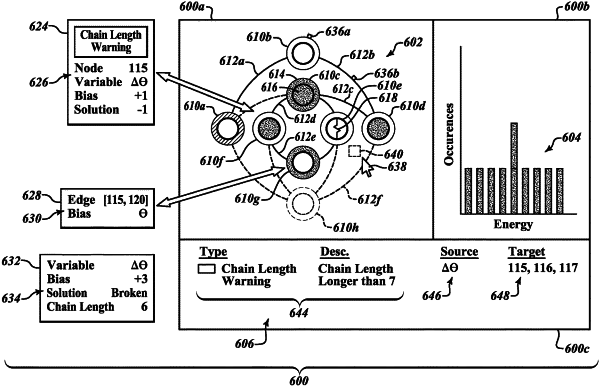| CPC G06F 3/04847 (2013.01) [G06F 3/04817 (2013.01); G06F 16/9024 (2019.01); G06N 10/00 (2019.01); G06T 11/206 (2013.01); G06T 2200/24 (2013.01)] | 22 Claims |

|
1. A method of allowing configuration and/or debugging of a quantum processor-based system that comprises a quantum processor including a plurality of qubits and a plurality of couplers, each of the couplers operable to set a coupling strength between a respective pair of the qubits, the method executable via at least one digital processor that executes processor-executable instructions and interfaces with the quantum processor-based system, the method comprising:
generating a first instance of a problem in at least one data structure, the first instance of the problem representing parameters for a first embedding of the problem in the quantum processor;
causing a visual presentation of a user interface that includes a graph representation of the first instance of the problem, the graph representation comprising a set of nodes and a set of edges, each edge extending between a respective pair of the nodes; and
receiving at least one user input via the graph representation that is visually presented, the at least one user input representative of at least one modification to the first instance of the problem; and
generating a second instance of the problem in at least one data structure based on the at least one user input received via the graph representation, the second instance of the problem representing parameters for a second embedding of the problem in the quantum processor, the second embedding based at least in part on the at least one modification to the first instance of the problem.
|